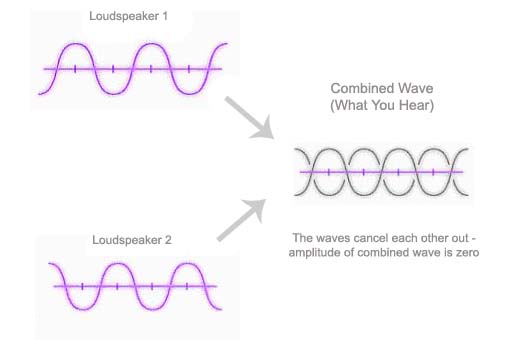Noise Cancellation Is Moving Ahead
The science of noise cancellation is actually quite a recent development, but the iPod generation seems to have incited headphone makers to invest heavily in such technology. It’s not only headphones that are making (and breaking) waves though…
Interfering With Yourself
In air, soundwaves are constantly interacting with one another, creating interference patterns. When you’re building a studio or trying to master an album, minimising these patterns is very important, as they can suppress or enhance particular frequencies – this means that you’re not hearing an accurate representation of the frequencies output by your speakers, but rather a version of it that’s coloured by your particular listening environment.
Fighting Sound With Sound
However, interference can be put to good use – as shown in the diagram below, if you take one waveform of a particular wavelength, frequency and amplitude and impose an inverted version of it on top, then the result is a total cancellation – silence.

In theory, this is how noise cancellation works – in practice, however, it’s considerably more difficult. There are huge numbers of competing waveforms bouncing around in our environments, and the noisier it gets, the harder it is to track them. So, a total silence is still unlikely in the real world, but significant reductions in SPL can be achieved.
This not only applies to music, but also to other noisy environments – for example, Toyota are developing noise-cancelling technology for cars that makes the interior of the vehicle less susceptible to engine noise…